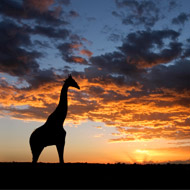
Thousands killed for trophy items over the past decade
Conservationists are calling on the US government to list giraffes as endangered in an effort to prevent the species from going extinct.
According to The Guardian, a petition backed by five environmental groups has been submitted to the US Fish and Wildlife Service demanding they give the giraffe endangered species protection.
Data gathered by the groups reveals that, in the past 10 years, the US imported more than 28,000 bone carvings, skin pieces and hunting trophies. A minimum of 3,700 giraffes are thought to have been slaughtered for such items.
The petition states that the US “is uniquely positioned to help conserve these tall, graceful and iconic animals.
“Considering the ongoing threats to giraffes and their small remaining populations now is the time for Endangered Species Act protections for this seriously and increasingly imperilled species.”
Efforts to conserve the giraffe have been somewhat obscured in recent years amid the poaching crisis surrounding rhinos and elephants.
But recent studies show that giraffes too live in increasingly broken habitats. This was brought to the fore in August 2016, when photographs surfaced of a young girl posing next to the body of a dead giraffe.
Besides poaching, other major threats to the giraffe include habitat loss (through deforestation), conversion of land for human developement and civil unrest.
The US Fish and Wildlife Service now has 90 days to respond to the petition and decide whether the listing may be justified. According to its website, it could then take up to a year to assess the situation and reach a final decision.



 BSAVA is to partner with BVA Live (11-12 June 2026) to champion clinical research.
BSAVA is to partner with BVA Live (11-12 June 2026) to champion clinical research.